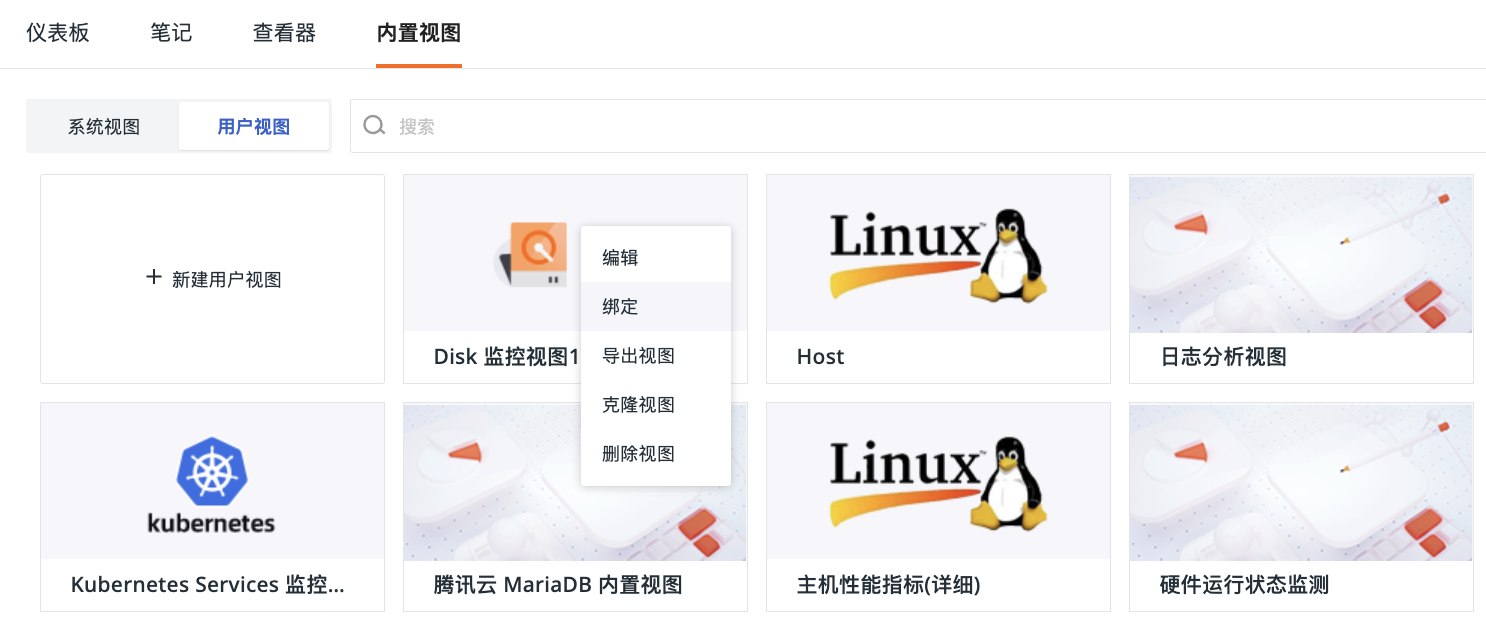Bind Built-in Views¶
This involves creating a binding relationship between built-in views (user views) and Explorers. By associating built-in views with tracing services, applications, log sources, projects, or other custom fields, you can view the bound views in the side-sliding details page for matching field values.
Start Binding¶
- Go to the Use Cases > Built-in Views > User Views > Bind page;
- Define the view name;
- Customize the identifier ID;
- Review the default associated fields. You can choose to keep or delete fields, and also add new
key:valuefields; - Confirm.
After configuring the binding relationship, you can go to the Explorer's side-sliding details page that matches the bound field values to view this built-in view.
Note
To ensure data consistency, when creating a binding relationship between user views and Explorers, you must add at least one field from the specified object class as the binding relationship for this built-in view, and the system will automatically synchronize the built-in view based on this binding relationship.
Field Description¶
When binding built-in views, in addition to the following fixed fields, it also supports user-defined input of existing fields (key) and field values (value) to generate binding relationships.
| Field Name | Data Scope |
|---|---|
service |
The service value in the Tracing data of the current workspace |
app_id |
The app_id value in the View data of the current workspace |
source |
The source value in the Logging data of the current workspace |
project |
The project value in the Object data of the current workspace |
label |
The label value in the Object data of the current workspace |
Binding Field Display Logic
Matching Pattern: The value of the binding field supports the following patterns:
- Exact match
- Fuzzy match
Display Order: Binding fields are displayed in the following order: service > app_id > source > project > label. No special processing is done for the order of identical fields.
Time Range: In the Explorer details page, the bound built-in view defaults to displaying data from "the last 15 minutes" and labels the time of the current data record.
Unbind¶
To delete a built-in view already bound in the Explorer details:
- Go back to the built-in view page and locate the view;
- Click Bind;
- Clear the field content;
- Confirm.
